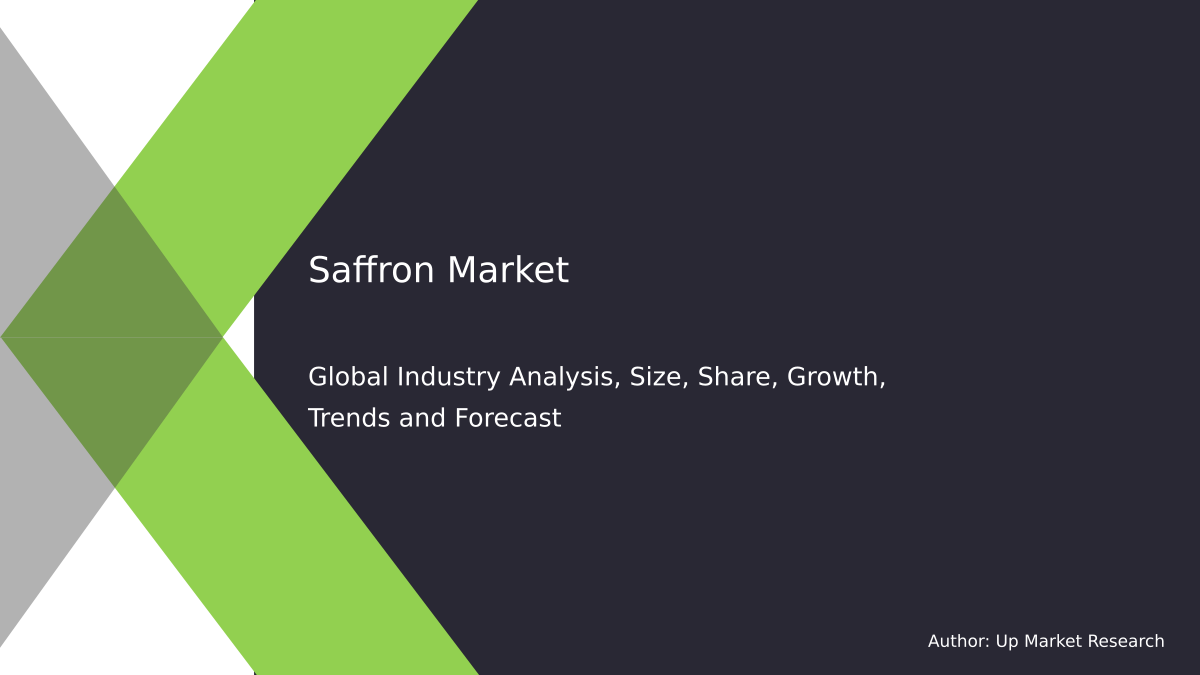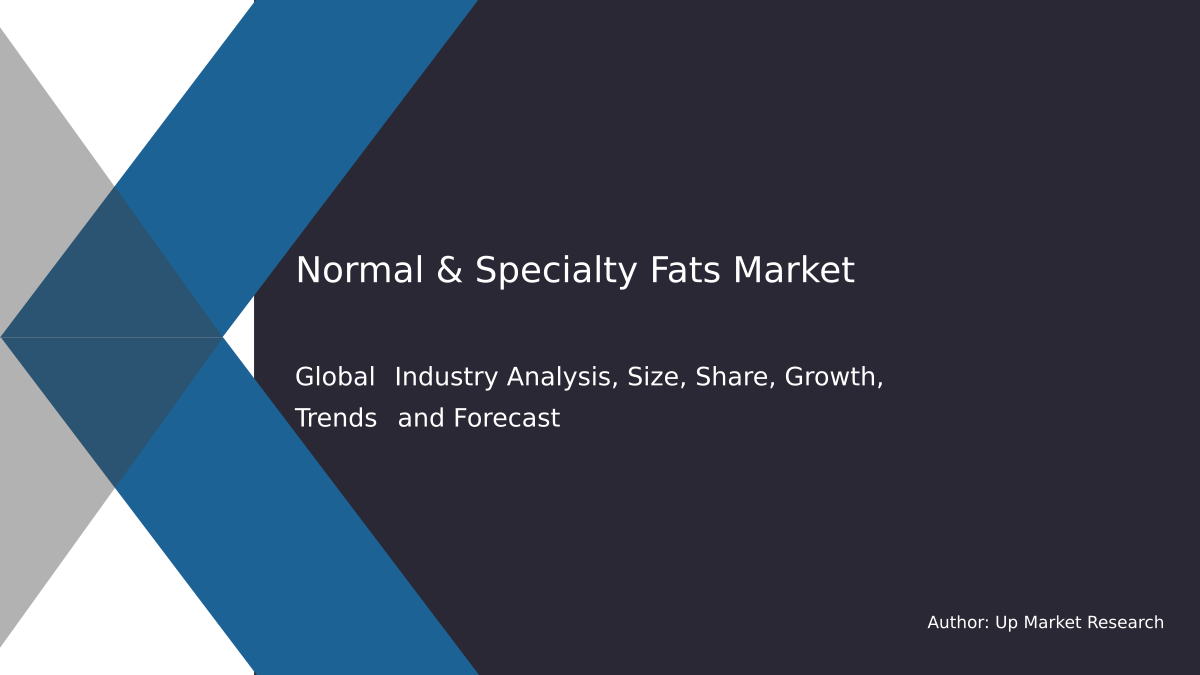
Global Saffron Market by Grade (III, Grade I, IV, II), by Application (Medical, Cosmetics, Food) and Region (North America, Latin America, Europe, Asia Pacific and Middle East & Africa), Forecast To 2028
Summary of the Report
Global saffron markets were valued at USD 374.6 Million in 2020. They are expected to grow at an 8.5% compound annual growth rate (CAGR), from 2020-2028. The market's key driver is expected to be the growing demand for saffron for cosmetic and medical purposes. Saffron is high in antioxidants, which has many health benefits. Picrocrocin and safranal are the main active compounds in saffron. These active compounds reduce inflammation and oxidative damage in the brain. The market is expected to grow because of its memory-enhancing, anti-inflammatory, and anti-inflammatory qualities. It is also used in cosmetics as a natural UV-absorbing ingredient.
Image processing technology, pilot scale and the electric nose are key technologies in processing. Although the process of separating stigmas can still be done manually, it is faster to use an image processing method. ISO Standard 3632 refers to the measurement of quality. Due to the increased demand and high prices in the global marketplace, adulteration has seen a rapid increase in recent years. Adulteration is the mixing of products with similar appearances to saffron.
Adulteration can lead to variations in product quality and consequently, in prices. ISO 3632-1, and ISO 3632-2 are the two parts of the standard that identify the testing methods for different classifications of dried, cut, powdered, and threads. The standards are used to verify the quality of flavor, smell, and color of saffron. This helps consumers avoid buying fake products that are both expensive and have no nutritional value.
Due to increasing awareness about the medicinal benefits and health benefits of saffron, the U.S. has seen an increase in demand for the product over the last few years. Trade between Iran and the U.S. saw a boom after the U.S. lifted trade restrictions on Iran imports. American growers have increased their investment in cultivation. Growers in the U.S., including those from Washington, Pennsylvania, and Vermont, have taken initiatives to increase domestic supply at a lower cost.
Grade Insights
Grade I is the highest quality product on the global market. In 2020, the grade I segment was responsible for more than 59% of global market revenue. Grade I also includes neigin (sargol), where the ISO reading for Negin is more than 270, and that of Sargol between 260-270. This segment had the highest share due to its high color, flavoring strength and aromatic properties. The high color and flavoring strength grade I saffron makes them suitable for premium culinary applications and fragrances as well as premium personal care products.
The segment's growth is fueled by the increasing popularity of premium products. The ISO 3632 standard checks the authenticity and quality of saffron based on its grading. It also inspects their packaging and labeling. The grade and results of these inspections are key factors in determining the market price for the product. Because of its high safranal (fragrance), content, Grade III is used in cosmetics and personal care products.
Application Insights
Medical applications are expected to see the fastest growth at 8.8% during the forecast period. This segment is expected to grow due to the importance of saffron for traditional medicines in countries like Iran, India, China and China.
Saffron is thought to be able to fight free radicals that can cause a variety of diseases such as asthma, diabetes, inflammatory joint disease, and cancer. It is also used in cosmetics, including skincare and personal care products. Recently, saffron has been gaining renewed attention for its use as a cosmetic ingredient. It has multiple uses in cosmetics, not only because of its antioxidant properties. Saffron can also be used in food, textile, or fragrance industries.
Regional Insights
Asia Pacific accounted for more than 37.5% of the global market's revenue in 2020. India is Asia Pacific's largest producer, while China and India are the top consumers in the region. Saffron, a traditional spice that has been used in both food and medicine for centuries, is highly valued in these countries. Because of its unique flavor and color, Kashmiri saffron is highly sought after around the world. It is mainly exported to China and Australia, Japan, Japan, Germany, and certain parts of South Asian countries.
Europe is a significant market for reexports because some member countries have strong competitive advantages in terms processing, packaging and branding. Importers who re-export are able to make significant value-added profits and are constantly looking for higher-quality products. Europe's market share in the global marketplace will likely increase due to the increasing number of re-exports from European countries.
The fastest growth in Middle East and Africa is expected to be 9.3% during the forecast period. Iran is the world's largest producer of oil and gas. More than 90% of the world's production is produced by Iran. A number of countries in the MEA region (Afghanistan, Egypt, Israel and Azerbaijan) have micro-scale cultivation.
Market Share Insights & Key Companies
Global markets are characterized by a small number of players. Production is concentrated in the Middle East. There is a lot of potential in the market for new and emerging players who need support from all parts of the value chain. Both the established market players and newer ones have been more focused on strong brand management to enhance various differentiating factors such as portfolio diversification, premium packaging, and pricing. The following are some of the most prominent players in the global market for saffron:
-
Esfedan Trading Company
-
Safran Global Company S.U.
-
Tarvand Saffron Co.
-
Saffron Business Company
-
Gohar Saffron
-
Rowhani Saffron Co.
-
Mehr Safran
-
Flora Saffron
-
Royal Saffron Company
-
Iran Saffron Company
Up Market Research published a new report titled “Saffron Market research report which is segmented by Grade (III, Grade I, IV, II), by Application (Medical, Cosmetics, Food), By Players/Companies Iran Saffron company, Rowhani Saffron Co, Esfedan Trading Company, Gohar Saffron, Royal Saffron Company, Mehr Saffron, Saffron Business Company, Flora Saffron, Safran Global Company SLU, Tarvand Saffron Co”. As per the study the market is expected to grow at a CAGR of XX% in the forecast period.
Report Scope
| Report Attributes | Report Details |
| Report Title | Saffron Market Research Report |
| By Grade | III, Grade I, IV, II |
| By Application | Medical, Cosmetics, Food |
| By Companies | Iran Saffron company, Rowhani Saffron Co, Esfedan Trading Company, Gohar Saffron, Royal Saffron Company, Mehr Saffron, Saffron Business Company, Flora Saffron, Safran Global Company SLU, Tarvand Saffron Co |
| Regions Covered | North America, Europe, APAC, Latin America, MEA |
| Base Year | 2020 |
| Historical Year | 2018 to 2019 (Data from 2010 can be provided as per availability) |
| Forecast Year | 2028 |
| Number of Pages | 235 |
| Number of Tables & Figures | 165 |
| Customization Available | Yes, the report can be customized as per your need. |
The report covers comprehensive data on emerging trends, market drivers, growth opportunities, and restraints that can change the market dynamics of the industry. It provides an in-depth analysis of the market segments which include products, applications, and competitor analysis.

Global Saffron Market Report Segments:
The market is segmented by Grade (III, Grade I, IV, II), by Application (Medical, Cosmetics, Food).
Saffron Market research report delivers a close watch on leading competitors with strategic analysis, micro and macro market trend and scenarios, pricing analysis and a holistic overview of the market situations in the forecast period. It is a professional and a detailed report focusing on primary and secondary drivers, market share, leading segments and geographical analysis. Further, key players, major collaborations, merger & acquisitions along with trending innovation and business policies are reviewed in the report.
Key Benefits for Industry Participants & Stakeholders:
- Industry drivers, restraints, and opportunities covered in the study
- Neutral perspective on the market performance
- Recent industry trends and developments
- Competitive landscape & strategies of key players
- Potential & niche segments and regions exhibiting promising growth covered
- Historical, current, and projected market size, in terms of value
- In-depth analysis of the Saffron Market
Overview of the regional outlook of the Saffron Market:
Based on region, the market is segmented into North America, Europe, Asia Pacific, Latin America and Middle East & Africa (MEA). North America region is further bifurcated into countries such as U.S., and Canada. The Europe region is further categorized into U.K., France, Germany, Italy, Spain, Russia, and Rest of Europe. Asia Pacific is further segmented into China, Japan, South Korea, India, Australia, South East Asia, and Rest of Asia Pacific. Latin America region is further segmented into Brazil, Mexico, and Rest of Latin America, and the MEA region is further divided into GCC, Turkey, South Africa, and Rest of MEA.

Highlights of The Saffron Market Report:
- The market structure and projections for the coming years.
- Drivers, restraints, opportunities, and current trends of Saffron Market.
- Historical data and forecast.
- Estimations for the forecast period 2028.
- Developments and trends in the market.
1. III
2. Grade I
3. IV
4. II
7. By Application:1. Medical
2. Cosmetics
3. Food
- Market scenario by region, sub-region, and country.
- Market share of the market players, company profiles, product specifications, SWOT analysis, and competitive landscape.
- Analysis regarding upstream raw materials, downstream demand, and current market dynamics.
- Government Policies, Macro & Micro economic factors are also included in the report.
We have studied the Saffron Market in 360 degrees via. both primary & secondary research methodologies. This helped us in building an understanding of the current market dynamics, supply-demand gap, pricing trends, product preferences, consumer patterns & so on. The findings were further validated through primary research with industry experts & opinion leaders across countries. The data is further compiled & validated through various market estimation & data validation methodologies. Further, we also have our in-house data forecasting model to predict market growth up to 2028.
How you may use our products:
- Correctly Positioning New Products
- Market Entry Strategies
- Business Expansion Strategies
- Consumer Insights
- Understanding Competition Scenario
- Product & Brand Management
- Channel & Customer Management
- Identifying Appropriate Advertising Appeals

Reasons to Purchase the Saffron Market Report:
- The report includes a plethora of information such as market dynamics scenario and opportunities during the forecast period
- Segments and sub-segments include quantitative, qualitative, value (USD Million,) and volume (Units Million) data.
- Regional, sub-regional, and country level data includes the demand and supply forces along with their influence on the market.
- The competitive landscape comprises share of key players, new developments, and strategies in the last three years.
- Comprehensive companies offering products, relevant financial information, recent developments, SWOT analysis, and strategies by these players.
Chapter 2 Assumptions and Acronyms Used
Chapter 3 Research Methodology
Chapter 4 Saffron Market Overview
4.1 Introduction
4.1.1 Market Taxonomy
4.1.2 Market Definition
4.1.3 Macro-Economic Factors Impacting the Market Growth
4.2 Saffron Market Dynamics
4.2.1 Market Drivers
4.2.2 Market Restraints
4.2.3 Market Opportunity
4.3 Saffron Market - Supply Chain Analysis
4.3.1 List of Key Suppliers
4.3.2 List of Key Distributors
4.3.3 List of Key Consumers
4.4 Key Forces Shaping the Saffron Market
4.4.1 Bargaining Power of Suppliers
4.4.2 Bargaining Power of Buyers
4.4.3 Threat of Substitution
4.4.4 Threat of New Entrants
4.4.5 Competitive Rivalry
4.5 Global Saffron Market Size & Forecast, 2018-2028
4.5.1 Saffron Market Size and Y-o-Y Growth
4.5.2 Saffron Market Absolute $ Opportunity
Chapter 5 Global Saffron Market Analysis and Forecast by Grade
5.1 Introduction
5.1.1 Key Market Trends & Growth Opportunities by Grade
5.1.2 Basis Point Share (BPS) Analysis by Grade
5.1.3 Absolute $ Opportunity Assessment by Grade
5.2 Saffron Market Size Forecast by Grade
5.2.1 III
5.2.2 Grade I
5.2.3 IV
5.2.4 II
5.3 Market Attractiveness Analysis by Grade
Chapter 6 Global Saffron Market Analysis and Forecast by Application
6.1 Introduction
6.1.1 Key Market Trends & Growth Opportunities by Application
6.1.2 Basis Point Share (BPS) Analysis by Application
6.1.3 Absolute $ Opportunity Assessment by Application
6.2 Saffron Market Size Forecast by Application
6.2.1 Medical
6.2.2 Cosmetics
6.2.3 Food
6.3 Market Attractiveness Analysis by Application
Chapter 7 Global Saffron Market Analysis and Forecast by Region
7.1 Introduction
7.1.1 Key Market Trends & Growth Opportunities by Region
7.1.2 Basis Point Share (BPS) Analysis by Region
7.1.3 Absolute $ Opportunity Assessment by Region
7.2 Saffron Market Size Forecast by Region
7.2.1 North America
7.2.2 Europe
7.2.3 Asia Pacific
7.2.4 Latin America
7.2.5 Middle East & Africa (MEA)
7.3 Market Attractiveness Analysis by Region
Chapter 8 Coronavirus Disease (COVID-19) Impact
8.1 Introduction
8.2 Current & Future Impact Analysis
8.3 Economic Impact Analysis
8.4 Government Policies
8.5 Investment Scenario
Chapter 9 North America Saffron Analysis and Forecast
9.1 Introduction
9.2 North America Saffron Market Size Forecast by Country
9.2.1 U.S.
9.2.2 Canada
9.3 Basis Point Share (BPS) Analysis by Country
9.4 Absolute $ Opportunity Assessment by Country
9.5 Market Attractiveness Analysis by Country
9.6 North America Saffron Market Size Forecast by Grade
9.6.1 III
9.6.2 Grade I
9.6.3 IV
9.6.4 II
9.7 Basis Point Share (BPS) Analysis by Grade
9.8 Absolute $ Opportunity Assessment by Grade
9.9 Market Attractiveness Analysis by Grade
9.10 North America Saffron Market Size Forecast by Application
9.10.1 Medical
9.10.2 Cosmetics
9.10.3 Food
9.11 Basis Point Share (BPS) Analysis by Application
9.12 Absolute $ Opportunity Assessment by Application
9.13 Market Attractiveness Analysis by Application
Chapter 10 Europe Saffron Analysis and Forecast
10.1 Introduction
10.2 Europe Saffron Market Size Forecast by Country
10.2.1 Germany
10.2.2 France
10.2.3 Italy
10.2.4 U.K.
10.2.5 Spain
10.2.6 Russia
10.2.7 Rest of Europe
10.3 Basis Point Share (BPS) Analysis by Country
10.4 Absolute $ Opportunity Assessment by Country
10.5 Market Attractiveness Analysis by Country
10.6 Europe Saffron Market Size Forecast by Grade
10.6.1 III
10.6.2 Grade I
10.6.3 IV
10.6.4 II
10.7 Basis Point Share (BPS) Analysis by Grade
10.8 Absolute $ Opportunity Assessment by Grade
10.9 Market Attractiveness Analysis by Grade
10.10 Europe Saffron Market Size Forecast by Application
10.10.1 Medical
10.10.2 Cosmetics
10.10.3 Food
10.11 Basis Point Share (BPS) Analysis by Application
10.12 Absolute $ Opportunity Assessment by Application
10.13 Market Attractiveness Analysis by Application
Chapter 11 Asia Pacific Saffron Analysis and Forecast
11.1 Introduction
11.2 Asia Pacific Saffron Market Size Forecast by Country
11.2.1 China
11.2.2 Japan
11.2.3 South Korea
11.2.4 India
11.2.5 Australia
11.2.6 South East Asia (SEA)
11.2.7 Rest of Asia Pacific (APAC)
11.3 Basis Point Share (BPS) Analysis by Country
11.4 Absolute $ Opportunity Assessment by Country
11.5 Market Attractiveness Analysis by Country
11.6 Asia Pacific Saffron Market Size Forecast by Grade
11.6.1 III
11.6.2 Grade I
11.6.3 IV
11.6.4 II
11.7 Basis Point Share (BPS) Analysis by Grade
11.8 Absolute $ Opportunity Assessment by Grade
11.9 Market Attractiveness Analysis by Grade
11.10 Asia Pacific Saffron Market Size Forecast by Application
11.10.1 Medical
11.10.2 Cosmetics
11.10.3 Food
11.11 Basis Point Share (BPS) Analysis by Application
11.12 Absolute $ Opportunity Assessment by Application
11.13 Market Attractiveness Analysis by Application
Chapter 12 Latin America Saffron Analysis and Forecast
12.1 Introduction
12.2 Latin America Saffron Market Size Forecast by Country
12.2.1 Brazil
12.2.2 Mexico
12.2.3 Rest of Latin America (LATAM)
12.3 Basis Point Share (BPS) Analysis by Country
12.4 Absolute $ Opportunity Assessment by Country
12.5 Market Attractiveness Analysis by Country
12.6 Latin America Saffron Market Size Forecast by Grade
12.6.1 III
12.6.2 Grade I
12.6.3 IV
12.6.4 II
12.7 Basis Point Share (BPS) Analysis by Grade
12.8 Absolute $ Opportunity Assessment by Grade
12.9 Market Attractiveness Analysis by Grade
12.10 Latin America Saffron Market Size Forecast by Application
12.10.1 Medical
12.10.2 Cosmetics
12.10.3 Food
12.11 Basis Point Share (BPS) Analysis by Application
12.12 Absolute $ Opportunity Assessment by Application
12.13 Market Attractiveness Analysis by Application
Chapter 13 Middle East & Africa (MEA) Saffron Analysis and Forecast
13.1 Introduction
13.2 Middle East & Africa (MEA) Saffron Market Size Forecast by Country
13.2.1 Saudi Arabia
13.2.2 South Africa
13.2.3 UAE
13.2.4 Rest of Middle East & Africa (MEA)
13.3 Basis Point Share (BPS) Analysis by Country
13.4 Absolute $ Opportunity Assessment by Country
13.5 Market Attractiveness Analysis by Country
13.6 Middle East & Africa (MEA) Saffron Market Size Forecast by Grade
13.6.1 III
13.6.2 Grade I
13.6.3 IV
13.6.4 II
13.7 Basis Point Share (BPS) Analysis by Grade
13.8 Absolute $ Opportunity Assessment by Grade
13.9 Market Attractiveness Analysis by Grade
13.10 Middle East & Africa (MEA) Saffron Market Size Forecast by Application
13.10.1 Medical
13.10.2 Cosmetics
13.10.3 Food
13.11 Basis Point Share (BPS) Analysis by Application
13.12 Absolute $ Opportunity Assessment by Application
13.13 Market Attractiveness Analysis by Application
Chapter 14 Competition Landscape
14.1 Saffron Market: Competitive Dashboard
14.2 Global Saffron Market: Market Share Analysis, 2019
14.3 Company Profiles (Details – Overview, Financials, Developments, Strategy)
14.3.1 Iran Saffron company
14.3.2 Rowhani Saffron Co
14.3.3 Esfedan Trading Company
14.3.4 Gohar Saffron
14.3.5 Royal Saffron Company
14.3.6 Mehr Saffron
14.3.7 Saffron Business Company
14.3.8 Flora Saffron
14.3.9 Safran Global Company SLU
14.3.10 Tarvand Saffron Co
The global Saffron market has been segmented based on
By Grade
- III
- Grade I
- IV
- II
- Medical
- Cosmetics
- Food
- Asia Pacific
- North America
- Latin America
- Europe
- Middle East & Africa
- Iran Saffron company
- Rowhani Saffron Co
- Esfedan Trading Company
- Gohar Saffron
- Royal Saffron Company
- Mehr Saffron
- Saffron Business Company
- Flora Saffron
- Safran Global Company SLU
- Tarvand Saffron Co
Related Reports
Some other reports from this category!




















